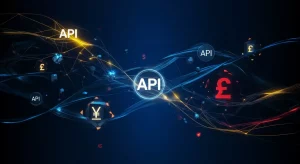Finance departments across UK mid-sized and large enterprises are in a constant battle. Fragmented systems, reliance on manual data transfers, and siloed information lead to delayed insights, increased errors, and significant operational bottlenecks.
The solution? API to API integration. This technology enables direct, automated communication between your disparate financial applications—from your ERP and CRM to your banking platforms and payment gateways. It's not just an IT upgrade; it's a strategic transformation of your financial workflow.
Why UK Finance Leaders Must Embrace API to API Integration Now
Moving beyond legacy processes is no longer optional. API integration delivers tangible advantages that directly impact your bottom line and competitive edge.
✅ Tangible Advantages
-
Accelerated Month-End Close: Streamlined data flows can cut close cycles by up to 30%, freeing your team to focus on analysis and strategic tasks.
-
Enhanced Accuracy & Compliance: Drastically reduced manual input means fewer errors and improved, automated adherence to FCA and GDPR mandates.
-
Instant Cash Position Visibility: Direct links to bank APIs provide a real-time view of cash balances, which is essential for effective liquidity management and planning.
-
Future-Ready Scalability: A modular integration framework allows for the seamless onboarding of new financial systems, software, or partners.
-
Robust Security: Sensitive financial data is protected through encrypted channels and strict, role-based access controls.
❌ The High Cost of Neglecting Integration
Sticking with the status quo carries significant, measurable risks:
-
Time-consuming manual reconciliations are prone to human error.
-
Fragmented financial reporting that delays critical decision-making.
-
Elevated risk of regulatory non-compliance and associated penalties.
-
Increased potential for fraudulent transactions due to a lack of transparent, real-time oversight.
Quantifying the ROI: What Your Finance Team Can Expect
While the exact return varies by organisation, the following table outlines the common impact areas and their typical results, providing a clear business case for investment.
| Benefit | Impact | Outcome |
|---|---|---|
| Labour Cost Savings | 20–40% reduction | Cuts costs by automating manual entry & reconciliation |
| Financial Close Cycle | 10–30% decrease | Shortens month-end close duration |
| Data Error Reduction | 50–70% fewer errors | Boosts reporting reliability & reduces corrective work |
| Cash Forecasting | Up to 5% more accurate | Enables precise liquidity planning with real-time data |
Real-World Impact: A UK-based wholesaler expedited its month-end close from 8 days down to just 5 after linking its ERP and treasury platforms via API. This not only reduced overtime costs but also significantly enhanced the reliability and speed of its financial reporting.
Navigating the Path to Integration: Key Considerations
Adopting a new integration strategy requires careful planning. Being aware of potential challenges allows you to mitigate them effectively from the start.
| Challenge | Mitigation Strategy |
|---|---|
| Data Security Breaches | Use strong encryption, MFA, and role-based access controls |
| Integration Complexity | Conduct system mapping and proof-of-concept trials |
| Vendor Dependency | Choose open API standards to avoid lock-in |
| Service Outages | Deploy redundant systems and continuous monitoring |
Conclusion: A Strategic Imperative
For UK finance leaders, API-to-API integration has moved from a "nice-to-have" technical feature to a core strategic imperative. It breaks down the barriers between your systems, transforming your finance operation from a cost centre focused on manual labour into a strategic powerhouse that drives efficiency, accuracy, and intelligent growth.
The question is no longer if you should integrate, but how quickly you can start.






